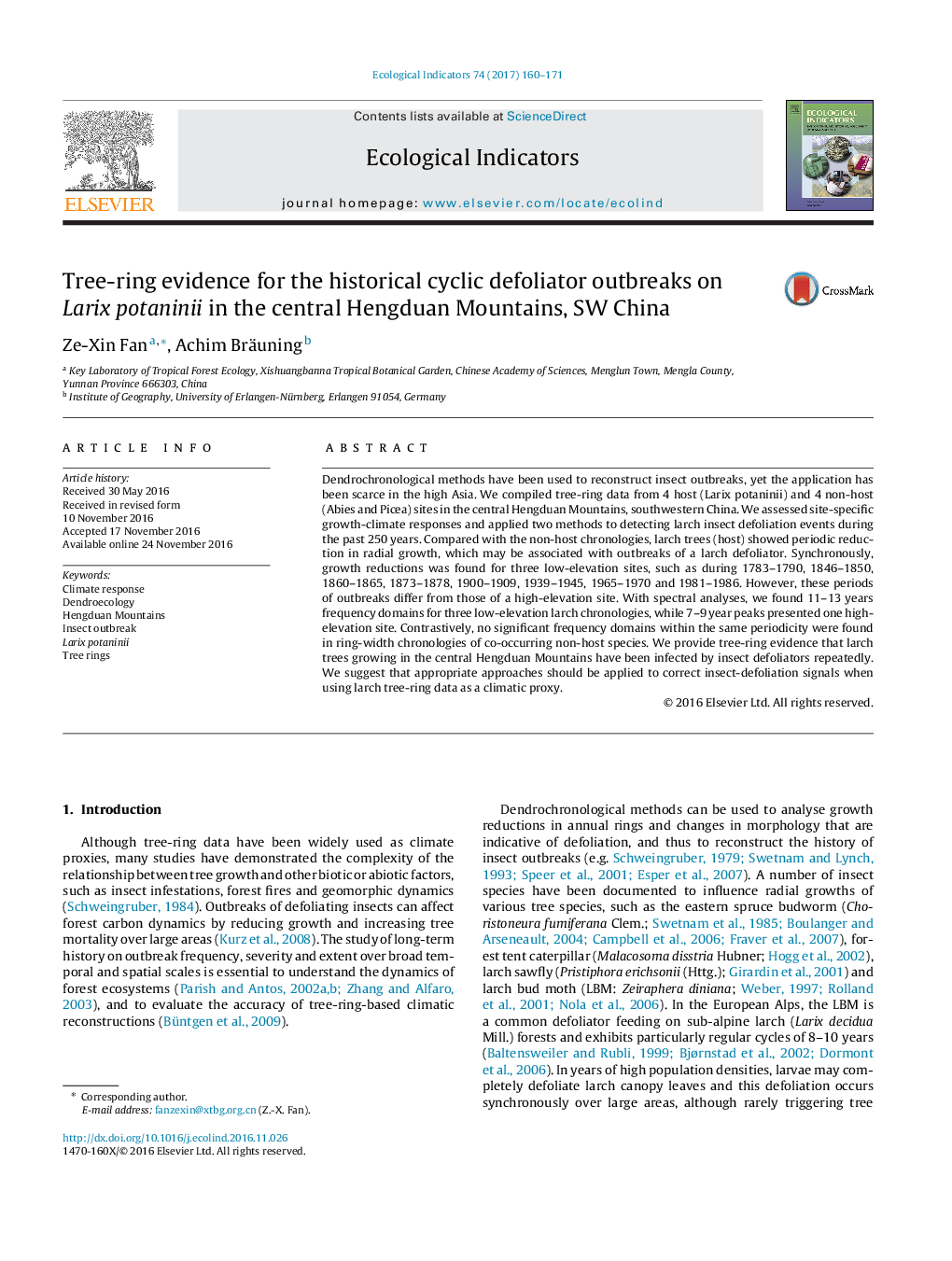| Article ID | Journal | Published Year | Pages | File Type |
|---|---|---|---|---|
| 5741844 | Ecological Indicators | 2017 | 12 Pages |
Dendrochronological methods have been used to reconstruct insect outbreaks, yet the application has been scarce in the high Asia. We compiled tree-ring data from 4 host (Larix potaninii) and 4 non-host (Abies and Picea) sites in the central Hengduan Mountains, southwestern China. We assessed site-specific growth-climate responses and applied two methods to detecting larch insect defoliation events during the past 250 years. Compared with the non-host chronologies, larch trees (host) showed periodic reduction in radial growth, which may be associated with outbreaks of a larch defoliator. Synchronously, growth reductions was found for three low-elevation sites, such as during 1783-1790, 1846-1850, 1860-1865, 1873-1878, 1900-1909, 1939-1945, 1965-1970 and 1981-1986. However, these periods of outbreaks differ from those of a high-elevation site. With spectral analyses, we found 11-13 years frequency domains for three low-elevation larch chronologies, while 7-9âyear peaks presented one high-elevation site. Contrastively, no significant frequency domains within the same periodicity were found in ring-width chronologies of co-occurring non-host species. We provide tree-ring evidence that larch trees growing in the central Hengduan Mountains have been infected by insect defoliators repeatedly. We suggest that appropriate approaches should be applied to correct insect-defoliation signals when using larch tree-ring data as a climatic proxy.
